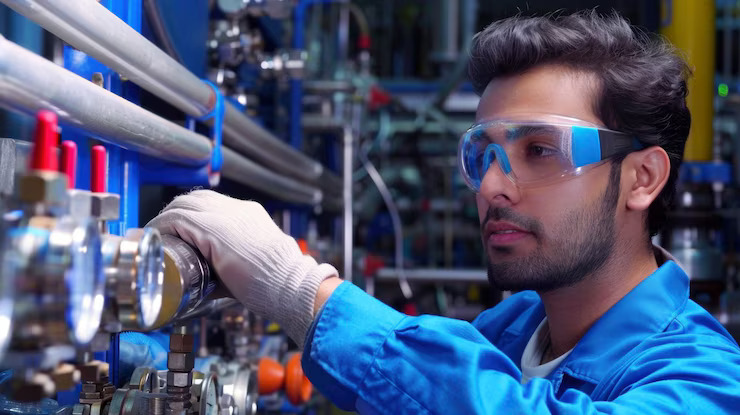In industries where precision and safety are paramount, the accurate application of torque is a critical factor. Torque tools such as wrenches, screwdrivers, and other fasteners are used across sectors like automotive, aerospace, manufacturing, and construction. However, over time and with repeated use, these tools can drift out of calibration, leading to inaccuracies that can affect product quality, worker safety, and regulatory compliance.
This is where torque calibration services come into play. torque calibration is, how it is performed, why it is essential, and the benefits it brings to both businesses and individuals.
What Is Torque Calibration?
Torque calibration is the process of verifying and adjusting the torque output of a tool to ensure that it matches the required specification. This process ensures the tool provides consistent, accurate force as required in assembly or tightening operations.
Calibration is typically performed using specialized calibration equipment, such as torque testers and analyzers, which measure the output of the tool against known standards. If discrepancies are found, adjustments are made to bring the tool back within acceptable tolerance limits.
Why Is Torque Calibration Important?
- Safety Compliance
Incorrect torque can lead to under-tightening or over-tightening, which could result in catastrophic mechanical failure. In industries such as aerospace or automotive, this could lead to serious accidents or loss of life. Torque calibration ensures tools apply the correct force, thus protecting lives and maintaining structural integrity. - Quality Assurance
Products assembled with inaccurately calibrated tools may suffer from performance issues or early failure. For manufacturers, this can lead to costly product recalls, warranty claims, and damage to brand reputation. - Compliance with Standards
Many industries are governed by quality standards such as ISO 9001, ISO/IEC 17025, and AS9100. Regular torque calibration is often a mandatory requirement for certification and compliance with these standards. - Cost Efficiency
Reworking defective parts due to torque errors costs time and money. Proper calibration minimizes errors and reduces waste, thereby improving overall operational efficiency.
The Torque Calibration Process
The torque calibration process typically involves several key steps:
- Initial Inspection
The tool is visually inspected for any damage, wear, or irregularities that may affect performance. If the tool is not in proper condition, it may need servicing or replacement before calibration. - Calibration Setup
The tool is mounted on a torque calibration machine, which includes a transducer or sensor to accurately measure the torque being applied. The calibration system is usually traceable to national or international standards. - Measurement
The tool is tested at different points across its torque range (typically low, mid, and high settings) to ensure it performs accurately at all levels. The output is compared against the standard, and any variance is recorded. - Adjustment
If discrepancies are found beyond the accepted tolerance (usually ±4% for many industrial torque tools), the technician adjusts the tool’s internal mechanism to bring it back into specification. - Documentation
Once calibrated, a calibration certificate is issued. This document includes details such as tool model, serial number, calibration date, results, uncertainty level, and the next due date for calibration. This certificate is crucial for audits and compliance checks. - Labeling
A sticker or tag is often applied to the tool to indicate its calibration status and due date for re-calibration.
Types of Tools That Require Torque Calibration
- Torque Wrenches (click type, beam type, digital)
- Torque Screwdrivers
- Pneumatic Torque Tools
- Hydraulic Torque Tools
- Electronic Torque Testers
Each type of tool may require slightly different calibration methods, but the goal remains the same: ensure precise and reliable torque output.
How Often Should Torque Tools Be Calibrated?
The calibration frequency depends on several factors:
- Manufacturer recommendations
- Frequency of use
- Operating environment (temperature, humidity, dust, etc.)
- Industry regulations
Typically, torque tools should be calibrated every 6 to 12 months, or after a specific number of cycles or usage hours. Tools used in critical applications or harsh environments may require more frequent calibration.
Choosing a Torque Calibration Service Provider
When selecting a calibration provider, consider the following:
- Accreditation: Ensure the provider is accredited to ISO/IEC 17025, which demonstrates competence in calibration testing.
- Traceability: Calibration should be traceable to national or international standards (like NIST or NABL).
- Turnaround Time: Fast service reduces tool downtime and boosts productivity.
- Support Services: Some providers offer pickup/delivery, tool repair, and on-site calibration options.
Benefits of Torque Calibration Services
- Improved product quality and reliability
- Enhanced workplace safety
- Reduced manufacturing and warranty costs
- Compliance with industry standards and audits
- Increased confidence in assembly line operations
- Extended lifespan of torque tools
Conclusion
Torque calibration services play a vital role in ensuring the accuracy and safety of torque tools used in a wide range of industries. Regular calibration not only meets regulatory and safety requirements but also enhances productivity, reduces costs, and protects the reputation of businesses. Whether you’re a small manufacturing unit or a large industrial player, investing in proper torque calibration services is not just a recommendation—it’s a necessity.
By partnering with a reliable and accredited torque calibration service provider, you ensure that your operations run smoothly, your products meet quality standards, and your employees stay safe.


